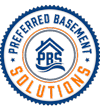Leak Repair
 Your home is very likely one of the biggest investments that you will ever make. It is not uncommon to even be emotionally attached to your home as you depend on it to keep your family safe, comfortable, healthy, and dry. Through regular inspections and routine maintenance, it should continue to do so for many years. In homes with foundations below grade, water intrusion will always be one of the biggest concerns for the homeowner because of the multitude of problems that can arise as a result. Every basement has the potential to leak! Aside from an earthquake, water poses the most serious threat. Many of the best methods for waterproofing a basement are generally incorporated when the foundation is built, but there are many ways to remedy moisture issues in existing basements as well.
Your home is very likely one of the biggest investments that you will ever make. It is not uncommon to even be emotionally attached to your home as you depend on it to keep your family safe, comfortable, healthy, and dry. Through regular inspections and routine maintenance, it should continue to do so for many years. In homes with foundations below grade, water intrusion will always be one of the biggest concerns for the homeowner because of the multitude of problems that can arise as a result. Every basement has the potential to leak! Aside from an earthquake, water poses the most serious threat. Many of the best methods for waterproofing a basement are generally incorporated when the foundation is built, but there are many ways to remedy moisture issues in existing basements as well.
 When a basement foundation is excavated and then eventually backfilled, the soil around the foundation will always be looser and more permeable than the “virgin” soil or the soil that was not disturbed during the excavation process. Water will naturally collect against the foundation in this soil as “loose” soil tends to be more expansive and absorbent. If no drainage system is in place, then hydrostatic pressure will begin to build. Hydrostatic pressure can reach upwards of 60 pounds of pressure per cubic foot. Under that amount of pressure, water can be forced through even the smallest crack. Waterproof coatings or membranes are the first line of defense on the exterior of the foundation. Without a working drainage system in place, however, the water that runs down the membrane will simply pool up around the foundation and not be conducted away. During heavy rains or spring melt off, the weight of the earth pushing against a foundation can double or even triple, threatening the structural integrity and water tightness of your basement.
When a basement foundation is excavated and then eventually backfilled, the soil around the foundation will always be looser and more permeable than the “virgin” soil or the soil that was not disturbed during the excavation process. Water will naturally collect against the foundation in this soil as “loose” soil tends to be more expansive and absorbent. If no drainage system is in place, then hydrostatic pressure will begin to build. Hydrostatic pressure can reach upwards of 60 pounds of pressure per cubic foot. Under that amount of pressure, water can be forced through even the smallest crack. Waterproof coatings or membranes are the first line of defense on the exterior of the foundation. Without a working drainage system in place, however, the water that runs down the membrane will simply pool up around the foundation and not be conducted away. During heavy rains or spring melt off, the weight of the earth pushing against a foundation can double or even triple, threatening the structural integrity and water tightness of your basement.
It is important to ensure that proper grade away from the foundation is maintained as a negative grade could actually allow water to pool or collect around the foundation. Grade should be set at 6 to 10, or 6 inches of fall in the first ten feet away from the foundation. Properly working gutters and downspouts that discharge rainwater sheet flow a sufficient distance away from the foundation are also vital. It is always better to “prevent” water from entering a structure and becoming an issue rather than “diverting” the water after the issue is present.
Water Infiltration
In the event that water does make it past your exterior waterproofing and infiltrates your basement, there are a number of ways to remedy the situation from the inside of your home rather than going through the intrusive process of excavating the entire foundation. A determination will be made as to the actual cause of the moisture intrusion as an accurate diagnosis of the issue is imperative to determining the correct “lasting” solution.
Water and sewer lines are also common sources that can cause moisture problems in your basement. Obstructed or damaged lines, especially close to your foundation, can significantly add to the saturation of the soil around your home, once again putting your home’s waterproofing to the test.
While there are numerous sources and potential causes of basement moisture infiltration into your home, there are just as many ways to repair and resolve them. Leaks left untreated can lead to mold, mildew, musty odors, or other biological growths, all of which have the potential to affect the health of you and your family. At Preferred Basement Solutions, we will thoroughly inspect and evaluate all potential causes and sources of your home’s moisture infiltration in order to recommend a solution that will keep your home happy and healthy for years to come! Click on the links below for more information on potential causes and our approach to resolving each situation.
